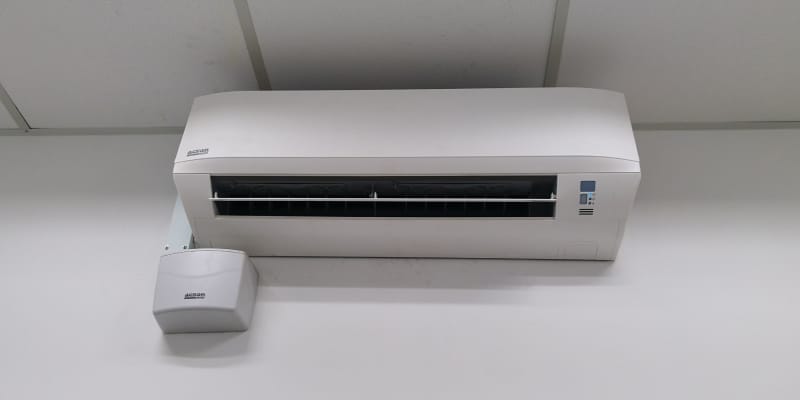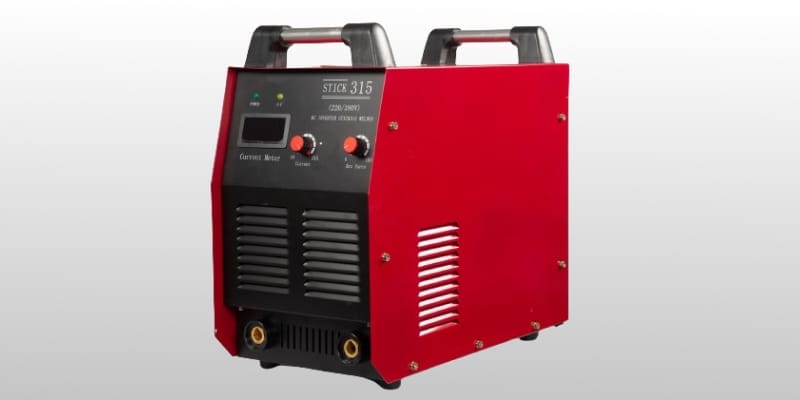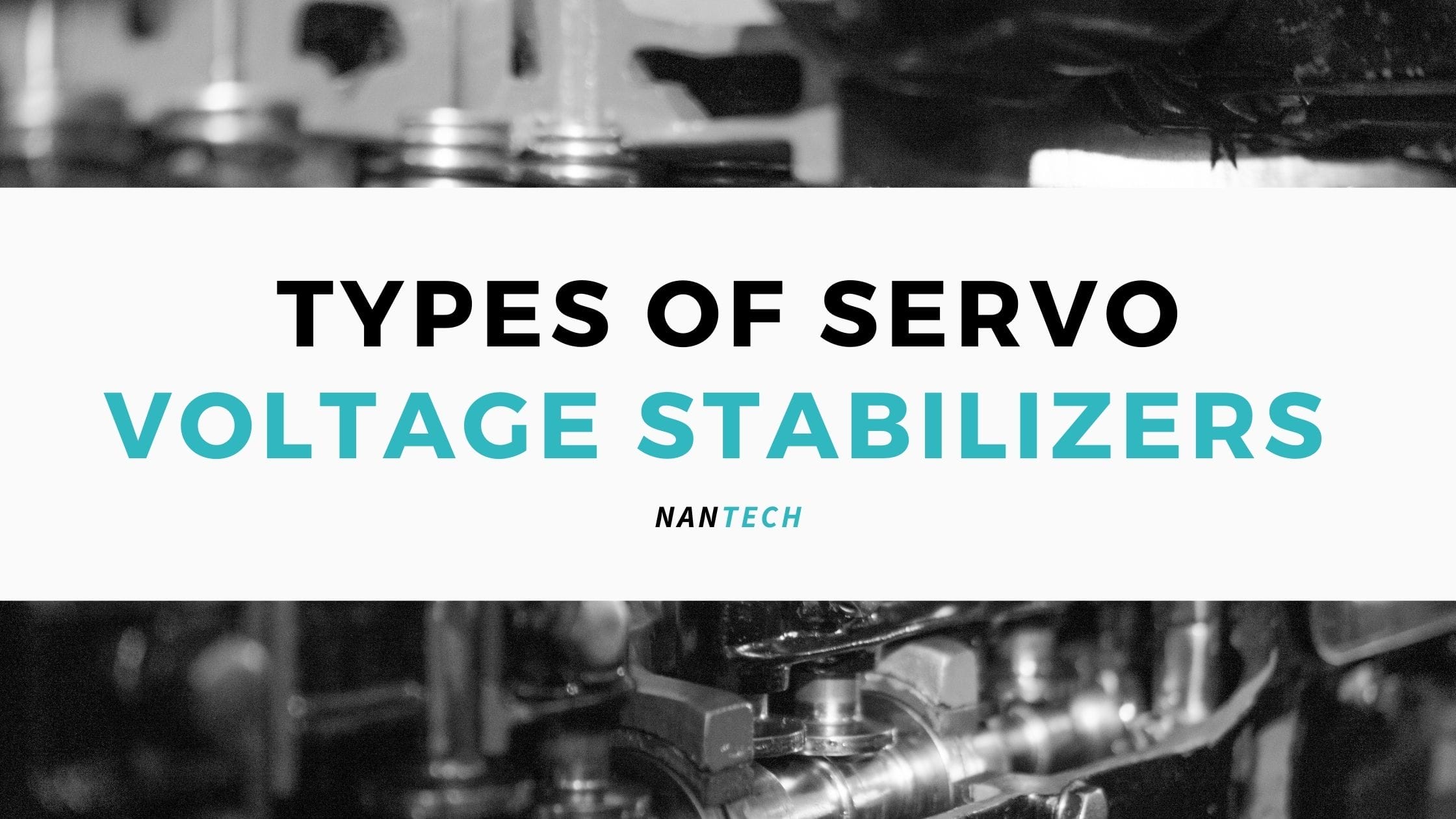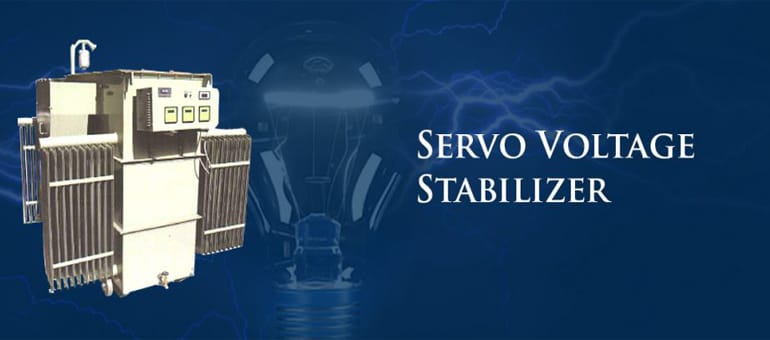- Home
- About us
- Products
- Dealer Enquiry
- Blog
- Contact Us
- Home
- About us
- Products
- Dealer Enquiry
- Contact Us
- 044 -2486 1994
- +91 99623 98222
- sales@nantech.in
- REQUEST A QUOTE

Living in India without an air conditioner (AC) may seem like a not-so-impossible task— but only until you experience the relentless heat and humidity of a typically hot day in our tropical country. It’s been ages since the AC became more of a necessity than a luxury appliance. However, the common question that arises when purchasing an AC is this: Why does an AC need a stabiliser? Of course, your AC needs a stabiliser.
If you are considering buying an AC stabiliser in Chennai, Nantech provides dependable solutions for appliance protection and efficiency.
This article helps you understand the role of a stabiliser in safeguarding your AC unit and regulating electricity consumption. Let’s begin.
It is an important device that keeps a steady voltage output from the main power supply to any connected device — such as an AC, refrigerator, or television. It ensures that the voltage remains constant to avoid power failures that could damage the appliance's internal components.
Naturally, the question arises: Do we need a stabiliser for ACs?
Let’s get one fact straight: A stabiliser’s prime task is to maintain a steady voltage supply to your AC, keeping it safe from fluctuations. Although it will not directly minimise your electricity consumption, it can indirectly help you save money by:
Investing in a stabiliser may not immediately reduce your monthly EB bills. However, its impact on efficiency and savings can be significant over time.
Of course, you can, as long as you have a consistent and stable power supply and minimum to nil voltage fluctuations. Most modern ACs — especially the inverter models — come with built-in voltage regulators, allowing them to handle minor variations. Larger fluctuations, however, can cause havoc on your AC’s delicate components, compressor, and motor, leading to quicker deterioration and poor efficacy.
When is a stabiliser really essential for your AC?
In a nutshell, your stabiliser transforms into a crucial protector and ensures steady voltage to keep your AC operating at optimum temperature.
Also Read: Servo Voltage Stabilizers: - Air-Cooled vs Oil-Cooled
Yes, it can, but indirectly, by improving your appliance efficacy and minimising energy wastage caused by voltage fluctuations. By ensuring a stable power supply, the stabiliser keeps your AC and other appliances operating as intended, resulting in low energy consumption compared to conditions of unstable voltage. This not only leads to cost savings on electricity bills but also mitigates potential repair expenses.
While a stabiliser does not cut power bills instantly, it performs the quiet yet important task of keeping your AC and other appliances energy-efficient.
Ensuring a steady supply of power, it:
Now we shall go through the major ways in which a stabiliser helps reduce energy consumption and long-term costs.
So, while it doesn't reduce your monthly power bill by a certain percentage, it does improve the overall efficiency of the AC and saves you on potential repair costs, which can be significant.
Yes, it most certainly will consume a small amount of electricity even when your AC is not running. This small consumption of energy is called standby power or vampire power.
So how does this happen? Stabilisers have internal circuits to monitor incoming voltage when the main outlet is switched on, but the appliance is not running. This circuit draws a minimal amount of energy, which usually amounts to a few watts.
This vampire power consumption from a single AC may be negligible. However, the combined consumption of multiple units can add up to a sizeable bill amount. The only way to avoid this extra power usage is to unplug or switch off the stabiliser from the wall socket.
Under ideal conditions and proper maintenance, a good-quality AC stabiliser will last for 5–10 years. The lesser the quality, the shorter the lifespan. The durability of an air conditioner stabiliser is governed by several factors, such as:
Replace your stabiliser when it emits noises or causes frequent tripping. If you notice erratic behaviour, strange noises, or frequent tripping, it might be a sign that your stabiliser is nearing the end of its life and needs replacement.
Do not take chances with your air conditioner, especially if your locality is prone to voltage fluctuations. This small investment will ensure the safety of your appliance and prevent unsafe incidents that can end in unwante0d expenses. Of course, a stabiliser may not make a significant difference to your electricity bills, but it will most definitely enhance your AC’s performance for years to come.
Looking for a reliable source to purchase your AC stabilisers? Connect with Nantech Power Systems Pvt. Ltd today — one of Chennai’s leading UPS manufacturers and dealers.

Power-ups and downs are common, yet picking the right servo voltage stabiliser is more than just saving your gear. It is about smooth function and saving energy. If you own a home or a business, the right stabiliser is critical to fighting power woes. Your devices need steady power, and a top servo voltage stabiliser can keep them humming and holding up longer. Gear up with the know-how to nail the perfect pick and keep your power needs met without a hitch.
In places where power is less stable, your equipment, life, and work can take a hit. A top-notch servo voltage stabiliser keeps the current even, shielding stuff like ACs and washers from harm. It is not just a guard. It also reduces energy use, saving you cash on power costs. When you are eyeing power fixers for your spot, It is vital to snag one that fits your scene. With the right gear, rest easy, knowing your devices are safe and in top form. Explore our blog to discover if a Servo Voltage Stabiliser is the solution you need.
Picking a servo voltage stabiliser means figuring out the total KVA you need for your gear. To get it right, you should:
After adding up the KVAs and checking the proper guides, you will be set to pick a stabiliser that meets your power needs, keeping your electrical stuff working well and lasting long.
Picking the right phase type for your servo voltage stabiliser is vital for your gear's safety. A one-phase system, common in houses, matches with a one-phase stabiliser. A three-phase stabiliser is a must for bigger places with three-phase systems.
Get the phase type right for your grid to ensure peak work and safety. Stabilisers are key, as they are big players in your gear life and function. To get a deeper look, check out why stabilisers are crucial. With the phase type down, eye your spot's voltage scene for steady protection for your gear.
Choosing a servo voltage stabiliser means knowing the input voltage band. This tells you the voltage swing where the stabiliser can tweak the incoming power to a safe, steady output. If your spot voltage often strays from this band, your stabiliser might fail, risking your gear.
Most stuff works within the usual output voltage band of 380 to 415 V AC, but you can tailor this to fit your gear's needs. Nantech’s servo stabilisers let you tweak the output voltage for your devices' best work and safety.
Collect information on the low and high voltage events to pick a stabiliser for your site’s voltage ups and downs. This will guide you to a stabiliser with an input voltage band wide enough for these swings, guaranteeing voltage stabilisation for your gear. With the right gear, your stuff won't just be safe. It will work like a charm.
Protecting your gear from voltage swings means looking at a servo voltage stabiliser's load capacity and response speed. When you are scoping out a servo voltage stabiliser for your stuff, keep these points in mind:
By zeroing in on these specs and upkeep roles, you will find a stabiliser that fits your load needs and snaps to voltage swings fast, keeping your devices safe and efficient.
When you are in the market for a servo voltage stabiliser, its build and lasting power are key for steady work over time. Different ways to mount, like on a wall or floor, fit different install needs and help save space and fight off the elements.
Safety bits, especially overload protection, are crucial to stop your devices from getting fried by cutting the output when the load gets too much. As you weigh these points, remember that the right stabiliser will blend into your electric setup, adding to your operation's overall safety and efficiency.
Choosing a servo voltage stabiliser from a brand with a good reputation is important for your gear life and top work. To make sure you are putting your money into a servo voltage stabiliser that will last and perform, think about these key points:
Keeping these in mind will guide you to a smart buy, ensuring you get a product that delivers steady work and has your back after you buy it.
Making a smart pick for a servo voltage stabiliser means choosing one that will last. Remember how vital stabilisers are in managing your power. It is clear that investing in a trusted servo voltage stabiliser is not just smart. It is necessary for keeping your appliances safe. Lock down your power with Nantech’s knowledge and look forward to a future where efficiency and safety go hand in hand.
Why not get a free power fix consultation with the leading servo voltage stabiliser dealers in Chennai? Contact Nantech’s experts today.

Sensitive electronic equipment may break down with an unstable power supply. This will affect the business continuity and the equipment. 230 and 415 volts are the low-voltage electric power distribution standards for single-phase and three-phase. Most of the electrical equipment, especially single-phase ones, are made to work with voltages between 220 and 240V. Voltage variations usually range from 170 to 270 V. When there is a voltage swing; appliances may experience substantial negative impacts.
By regulating voltage fluctuations, servo voltage stabilizers are crucial to any electrical supply equipment. If you own sensitive electrical equipment at home, contact any renowned servo stabilizer manufacturer in Chennai for assistance. Servo stabilizers guard against damage and electrical risks. In this blog, learn more about servo voltage stabilizers' uses, applications, and how they may safeguard your appliances.
High voltage
When the voltage is high, electrical and electronic equipment's no-load current rapidly rises. High current damages electrical and electronic equipment's insulation, accelerates equipment failure, and increases equipment losses due to overheating.
Low voltage
Electric equipment's no-load current does not rise at low voltage, which does not impact the equipment's lifespan. However, if the voltage is too low (370V), the consumer must use a DG set, which is quite expensive.
Let us discuss how the failure of various electronic equipment happens with voltage fluctuation here.
A servo stabilizer is necessary to maintain consistent voltage and protect priceless gadgets to gain the desired performance. A voltage regulator employs a feedback control method to maintain a constant output voltage. It is employed in circumstances where the input voltage is unpredictable or vulnerable to fluctuations. Servo stabilizers are recommended in regions with a poorly controlled power grid or where frequent blackouts or brownouts affect the electrical supply.
Compared to traditional voltage regulators like transformers, servo voltage stabilizers are accurate. They respond to changes in input voltage more quickly and efficiently. These features make servo voltage stabilizers suitable for various applications to safeguard expensive and fragile electronic machinery.
Characteristics
Although servo stabilizers primarily regulate voltage, they also include a few additional characteristics to make them more user-friendly. Depending on the mounting method, servo stabilizers are often designed in various versions.
There are ones that are pole-mounted and wall-mounted, so they may be installed at positions that are high from the ground level. This is to prevent any power-related mishaps. As a result, they guarantee a safer environment in different areas.
To maintain security, they also include a time delay system. They may have more time to deal with the uneven voltage situations. They have a metre to view the voltage and other crucial power parameters. LED indicators are utilised for displaying a variety of things.
They enable overload prevention by quickly responding to an unexpected short-circuit, power outage, or integrated circuit burn. Therefore, servo stabilizers are user-friendly, environmentally friendly, trustworthy, and efficient.
Benefits
Applications & usage
To safeguard delicate electronic equipment, servo voltage stabilizers can be applied in a variety of contexts, including industrial, commercial, and residential ones.
Printing equipment
Even a slight voltage difference can ruin printed material. Therefore, servo stabilizers and equipment like flexographic machines, offset lithography, digital printing inkjet, and xerography are necessary for the printing sector.
CNC machines
CNC machines and other imported machinery require protection against voltage and power-related problems. This is because they possess intricate circuits that are precisely calibrated to specific output voltages, a guarantee that can only be achieved by utilising a high-quality servo stabilizer.
Medical equipment
Medical equipment is expensive. For these reasons, protecting the equipment from voltage issues such as spikes and fluctuation is essential. By limiting the incoming voltage, servo stabilizers are crucial equipment that prevents overloading. Servo stabilizers are of great use to medical equipment like CT scanners and MRI machines and prove to be a wise investment.
Textiles
Machines in the textile industry frequently use three-phase supply lines, and these connections often experience voltage swings. A servo stabilizer is used to stop such voltage fluctuations so that the machines run without technical problems like overloading. Eventually, it helps in preventing any harm to the electrical equipment.
Plants/factories
Modern industrialists managing factories understand the value of servo voltage stabilizers and voltage controllers. They never think twice and invest in servo voltage stabilizers during the early stages while planning the factory.
Servo voltage stabilizers are widely used in various industries, including engineering, cold storage, air conditioning, cement, flour, oil, paper, rubber, tea estates, food processing, footwear and leather, distilleries and beverages. They are also used in clubs, multi-storey buildings, call centres and export houses.
Final words
When voltage stabilizers are implemented, you won't need to make any expensive replacements or repairs. Servo stabilizer suppliers will ensure that voltage fluctuations are taken care of in any circumstance. Contact Nantech Power Systems, one of the best UPS manufacturers in Chennai, and we'll help you determine the best course of action for your company's requirements.

To protect your critical types of equipment Nantech power systems Pvt.Ltd. the best servo voltage stabilizer dealers provide one of the best voltage stabilizers in Chennai city. This city is already advanced in technologies providing the futuristic level of hardware designs. If you are looking for servo voltage stabilizers your search ends here.
Voltage stabilizers are used to stabilize or regulate the voltage if the voltage is fluctuating over a given range. The main purpose of stabilizers is to provide a constant voltage to load or appliances.Servo Stabilizer is a Servo motor driven stabilization system that performs optimum voltage supply.
Servo stabilizer is an electromechanical device therefore its voltage correction speed is slower than static voltage stabilizer.
Following are the two types of servo voltage stabilizers
Air-cooled Servo Voltage Stabilizers are very much useful for various electrical as well as electronic applications.The servo stabilization mechanism with air-cooling means efficiently ensures optimumvoltages.This stabilizer includes a transformer and a power control circuit for controlling output AC voltage. The negative feedback circuit controls the voltage or power automatically and regulates it to a level that’s set or required. The most effective part is that within the entire operation, the voltage regulator doesn’t require any manual interruption, it functions automatically.
Oil-cooled have inherently higher short-time or sustained overload capacity as compared to Air-cooled types. The main difference between oil-cooled and air-cooled stabilizers is the capacity of oil-cooled stabilizers are for higher capacity. These are used in places where there is a high frequency of fluctuating voltage in the power supply. Anoil-cooled stabilizer guarantees that the fluctuation in the power supply does not affect the electronic or electricaltypes of equipment.
| Air-cooled servo voltage stabilizer | Oil-cooled servo voltage stabilizer | |
|---|---|---|
| Cooling type | Natural Air-cooled | Oil-cooled |
| Mode of system | Fully Automatic | Fully Automatic |
| Input Voltage | 300-460V / 340-480V / 360-460V 3Phase | 300-460V / 340-480V / 360-460V 3Phase |
| Frequency | 45 - 55 Hz | 45 – 55 Hz` |
| Connections | Star | Star |
| Output voltage | 380 - 400V | 380 - 400V |
| Waveform Distortion | Nil | Nil |
| Output Waveform | As same as Input | As same as Input |
| Operating Temperature | 0°C to 45°C | 0°C to 45°C |
| Insulation | Class F | Class F |
| Output Voltage Regulation | +1% (No Load/Full load) | +1% (No Load/Full load) |
| Efficiency | 98% | 98% |
| Features |
|
|
| APPLICATIONS |
|
|
| For more details and support | Click Here | Click Here |

It is an automated electronic system built to attain constant voltage levels. They protect the appliances by forming a closed loop of an absolutely controlled system. Even if there is a fluctuation in the input voltage or load, the resulting output voltage will remain invariable. It is also commonly called Servo Controlled Voltage Stabilizer. It works on the principle of servomechanism or feedback. They are used for maintaining the accuracy of high voltages with an output correction of about +_ 1%. They are installed at various institutions like hospitals and clinics, food processing units, hotels, Flour mills, etc.
Chennai is currently the largest electronics hardware exporter in India. It contributes a major chunk of Indian exports. One such company based in Chennai is Nantech Power SystemsPvt Ltd. It is one of the most promising manufacturers and suppliers in the field of building powering equipment. A few specifications of its servo stabilizers are as follows:
Servo controlled voltage stabilizers are preferred over the other relay and static type of voltage stabilizers because they come with the exact system, react quickly to any variation in voltage, manufactured in a user-friendly manner with an overall well-equipped circuit ability to sustain a high voltage surge. There is absolutely no compromise on the security of the user. Furthermore, it acts like an amour for the appliance as well.

Servo Voltage Stabilizers are important electrical components for the electrical wiring of the complex. It protects electrical equipment and machines by stabilizing the voltage input and protecting it from voltage fluctuations (both over and under supplies) and other voltage floods. Hence, this is also known as an Automatic Voltage Regulator(AVR). These work with many electromechanical transfers to give a suitable yield voltage, which is usually in an ideal range.
These come either in single-phase or three-phase units, depending on the use and the connection to limit the Kilovolt-Ampere (KVA) necessary. Three-phase units further come in two different types: Balanced Loadand Unbalanced Load models.
Furthermore, they are either for a piece of particular equipment or a spot or a major stabilizer unit for a group of apparatuses (E.g., an entire house). Also, they come in computerized or as simple stabilizer units.
Apart from the transformer circuits, a rectifier circuit, controller unit, and other parts are used for bucking operations. These are relatively easy to use and have less weight, and are commonplace in households and businesses.
Instabilities are ±15% with yield exactness between ±5-10%.
Advantages:
Disadvantages:
They use servo engines to control voltage influx and hence are also called Servo Stabilizers. These have closed-circle frameworks and are basically used for high-precision voltage returns (typically around ±1%). These come in 3 types:
Advantages:
Disadvantages:
These stabilizers have static parts and hence no moving parts as compared to a servo voltage stabilizer. These stabilizers are extremely accurate and have an exactness of voltage adjustment range of just ±1%. These static voltage stabilizers contain 'Buck & Boost' Transformers, Microcontrollers, Microprocessors, and other important components.
Advantages:
These stabilizers have static parts and hence no moving parts as compared to a servo voltage stabilizer. These stabilizers are extremely accurate and have an exactness of voltage adjustment range of just ±1%. These static voltage stabilizers contain 'Buck & Boost' Transformers, Microcontrollers, Microprocessors, and other important components.
Advantages:
In conclusion, each unit has its own advantages and disadvantages, and one must carefully choose their unit according to their needs and specifications. Today, many companies are flooding the market with different types of products, and companies like Nantech Power Systems are at the top with high customer reliability and product line-up.

Servo voltage stabilizers find widespread use in several modern industries. Their ability to manage discrepancies in the input voltage and provide a steady output voltage has found takers not only in industries but also in homes, schools, and offices around the world. Find out what makes servo stabilizers so sought-after.
Before we delve into the very many benefits of a Servo voltage stabilizer, let us first find out what servo stabilizer manufacturers in Chennai say about it.
A servo voltage stabilizer is one that uses a Servo motor to maintain the output voltage at the steady, rated value. The AC synchronous motor serves to control the input to a variable transformer which in turn regulates the output from the stabilizer. It scores over the more traditional relay-based voltage stabilizers in its voltage regulation capabilities.
Also Read: Know How To Buy The Right UPS!
Prevents Equipment Damage
Industrial equipment is often susceptible to damage from voltage fluctuations. If the input voltage is not within permissible limits, they can suffer substantial harm resulting in a malfunction or even complete breakdown of the machinery. Servo stabilizers keep the input voltage within 1% of the rated value, making them the best possible choice for controlling input power to any industrial equipment.
Protects Equipment Operators
Voltage variations can cause severe malfunction of machinery, which can result in serious bodily harm or a grievous injury to the factory personnel working them. So, it is imperative that the input voltage is kept within permissible limits to ensure safety in the shop floor. Servo voltage stabilizers can handle up to 50% variation in input voltage while providing only a 1% deviation in the output voltage.
Saves Money
Servo voltage stabilizers offer excellent value for money. They are low maintenance devices that are durable, and easy to transport. This is in addition to the overall savings in electricity bills as the voltage is regulated to within 1% of the rated value. Not to mention the hidden savings in equipment repair and replacement as they do a great job of protecting them.
Used For Non-Industrial Purposes Too
Not just in an industrial setting, servo voltage stabilizers are increasingly used for domestic purposes as well. Homes, schools are even offices are opting for these stabilizers to control the input voltage to refrigerators and air conditioning units. Besides saving on power, they also protect the appliances from voltage fluctuations as well as your family from a risk of electrical fire. They are available in a wide range of ratings to cater to industrial as well as domestic requirements.
Dealers Of Air Cooled Servo Voltage Stabilizer in Chennai Speak Of Its Other Benefits
In addition to the many advantages listed above, servo voltage stabilizers are also equipped to handle heavy loads, even 5000 KVA and above. It is available in both air-cooled and oil-cooled variations depending on the capacity. Since they provide stepless voltage correction at the rate of 25 volts per second, they are preferred over traditional relay-type stabilizers.
All these immense advantages make servo voltage stabilizers the ideal choice for voltage regulation in industries.